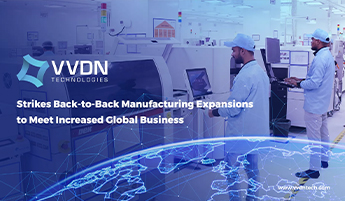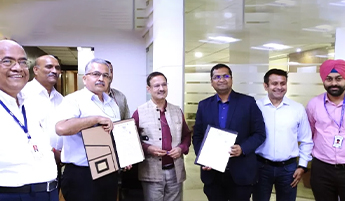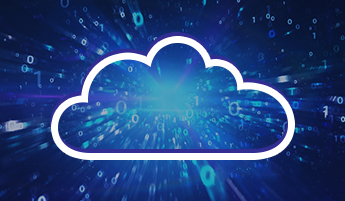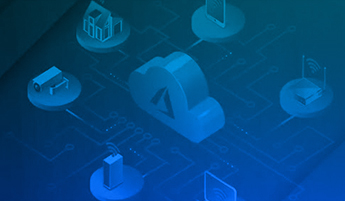In today’s rapidly evolving technological landscape, one term gaining significant attention is “Digital Twin.” This innovative concept has the potential to revolutionize various industries, from manufacturing and healthcare to urban planning and beyond. According to research by Markets & Markets, the global digital twin market was valued at USD 10.1 billion in 2023 and is projected to reach USD 110.1 billion by 2028, indicating substantial growth.
This blog will explore what digital twins are, how they work, and their capabilities in shaping our future.
What is a Digital Twin?
A digital twin is a computerized model of a system or item intended to replicate a real-world asset such as a machine, system, or process. By creating a digital counterpart of a real-world asset, digital twins enable real-time monitoring, analysis, and optimization. This concept allows for enhanced decision-making and predictive maintenance, leading to improved efficiency and innovation.
How Does Digital Twin Technology Work?
Digital twin virtual models are built using data collected from sensors, IoT devices, and other sources attached to physical models. The sensors on the physical asset continuously gather data such as pressure, temperature, location, and usage trends, and this information is transmitted to the digital twin in real-time.
By analyzing this data, the digital twin can provide valuable insights into the physical object’s operation, condition, and performance. It allows for predictive maintenance, performance optimization, and scenario testing without direct intervention on the physical object itself. Additionally, digital twins can be integrated with advanced analytics, AI algorithms, and simulation tools to further enhance their capabilities and accuracy.
Digital twins facilitate better decision-making, improved efficiency, and enhanced understanding of complex systems by providing a virtual representation that mirrors the behavior of their physical counterparts.
Top Digital Twin Applications Across Industries
Digital twin technologies bring numerous advantages and benefits over traditional methods. Let’s look at the top applications of digital twins across various industries:
- Manufacturing: Optimizing the production process, predicting equipment failures, and enhancing product quality by analyzing data from machines and manufacturing lines with the help of digital twins.
- Healthcare: Digital twins are crucial in the medical field for predicting patient outcomes, simulating surgical operations, and tailoring treatments to individual patients.
- Smart Cities: Urban planners use digital twins to model traffic patterns, energy usage, and environmental impacts, helping to create more sustainable cities.
- Energy Sector: Digital twins of power plants or grids can predict maintenance needs, optimize energy production, and enable remote monitoring of assets.
- Aerospace and Defense: Digital twins of aircraft, vehicles, and military equipment enable predictive maintenance, optimize mission planning, and enhance operational efficiency. They support training simulations and improve safety measures.
- Automotive: Digital twins of vehicles facilitate design optimization, performance monitoring, and predictive maintenance. They enhance driver safety, enable autonomous vehicle development, and improve the overall driving experience.
- Supply Chain Management: Digital twins optimize supply chain operations by providing real-time insights into inventory levels, production processes, and logistics. They enable predictive analytics, demand forecasting, and inventory optimization.
Digital twin technologies are revolutionizing various industries by providing deeper insights, enhancing efficiency, and enabling predictive capabilities. In the future, the applications will evolve, and we can expect great innovative and trend-changing benefits. Embracing these technologies will be key for businesses and organizations looking to stay ahead.
Benefits of Digital Twins
There are numerous benefits that can significantly enhance business performance. By increasing the reliability of equipment and production lines, businesses can achieve higher efficiency and productivity, resulting in reduced downtime and improved overall performance. This technology allows for predicting maintenance-related issues before they occur, leading to lower maintenance costs and faster production lines. Furthermore, it enhances product quality by providing deeper insights into real-time performance through a data-driven approach, and it streamlines supply and delivery chains, ultimately boosting profitability.
Overall, digital twins revolutionize how businesses operate, offering a wide range of benefits that drive efficiency, innovation, and competitive advantage in today’s increasingly digital world by adding value towards time-to-market, design-to-cost, and design-to-perform.
The Future of Digital Twins
As technology evolves, digital twins will become more sophisticated and essential to business operations. Integrating cloud computing, big data, AI, and IoT is driving the development of digital twin applications. In the coming years, we can expect even broader adoption and more advanced use cases across various industries.
The future of digital twin technology holds immense potential to revolutionize how we design, operate, and optimize physical systems and processes across various domains, driving efficiency, innovation, and sustainability in the digital age.
VVDN Expertise in Digital Twins
The rise of digital twins offers an exciting opportunity for VVDN and its clients to boost efficiency and drive innovation. Digital twins represent a significant shift in how we understand and interact with the world. By leveraging this technology, VVDN can deliver cutting-edge solutions for risk reduction, performance enhancement, and predictive maintenance. The future looks bright for digital twins, positioning VVDN to lead the way in using data-driven insights to revolutionize operations and provide exceptional value to clients.
For more information, reach out to our experts at info@vvdntech.com.





















